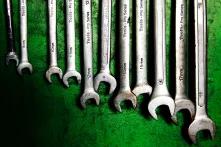
Throughout the last three decades, the Single Market project has been discussed controversially: for some, it is the idea of a united Europe working together, whereas for others it is an elite-driven process that leaves many behind. However, for the green movement it was part of the promise to ensure the economic and social inclusion of Europeans, and a critical building block to an ever-closer European Union. Discussing the future of the Single Market therefore also means discussing the future of European integration as a whole.

The European Single Market is a cornerstone of the European integration process. The promise of opening borders, a common economic space with shared standards, and strong and democratic institutions that govern the Single Market are key to this integration dynamic. With the legal basis laid in 1986, the Single Market came into being in January 1993. Thirty years later, the EU office of the Heinrich-Böll-Stiftung decided to take stock of the criticisms that have accompanied the creation and integration of the Single Market. In this publication, we have collected ideas from different stakeholders regarding how the Single Market can develop to become a tool for the socio-ecological transformation in Europe, stronger common (economic, financial and social) policies, and ultimately an ever-stronger political union.
Throughout the last three decades, the Single Market project has been discussed controversially: for some, it is the idea of a united Europe working together, whereas for others it is an elite-driven process that leaves many behind. However, the last three decades have shown that the reality of the Single Market has to be more nuanced. Europe has become one of the most ambitious setters of environmental and social standards in the world, with many aspiring to (re-)join, whilst European citizens enjoy, more than ever, the freedoms of the Single Market. Consumer standards help protect Europeans from harmful goods and practices, whilst enterprises can benefit from a joint market.
Yet, the Single Market is facing multiple threats and challenges: the implications of Russia’s war of aggression against Ukraine, the consequences of the pandemic, the energy and economic crises, and, last but not least, the urgently needed transformation towards a carbon neutral and circular economy to tackle the climate crisis.
However, the Single Market — for the green movement — never was a means in itself. It was part of the promise to ensure the economic and social inclusion of Europeans, and a critical building block to an ever-closer European Union. Discussing the future of the Single Market therefore also means discussing the future of European integration as a whole.
We therefore asked several stakeholders how they hope the European Single Market will develop, and what steps are needed to get these visions implemented. The authors come from a broad range of backgrounds — media, politics, civil society and academia — highlighting different aspects of the Single Market and European integration.
We would like to thank the authors for their insightful contributions to this publication and visions of how the European Single Market could evolve to support the decarbonisation of Europe’s economy, secure the highest standards of environmental and consumer protection, and to tackle the structural issues of European economic integration.
Developing a green vision of the Single Market will be a crucial step to work towards furthering European integration, and we hope that the essays collected here will inspire readers to think differently about the policy field of internal market politics.


